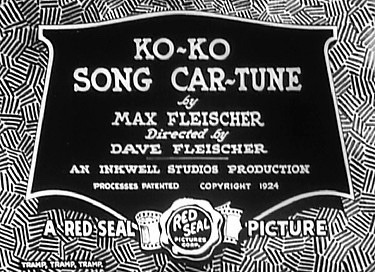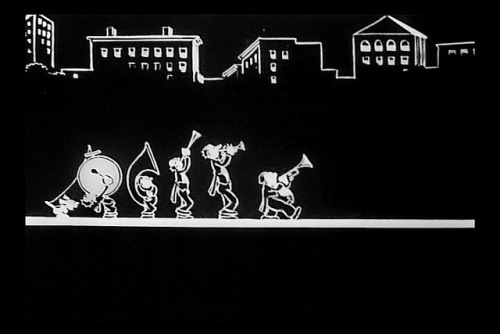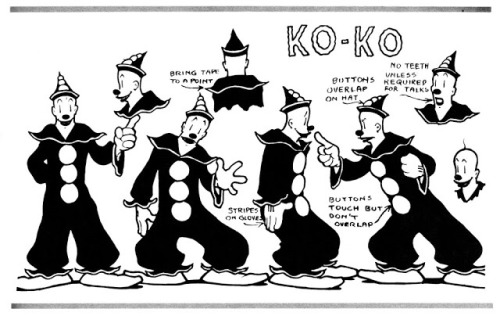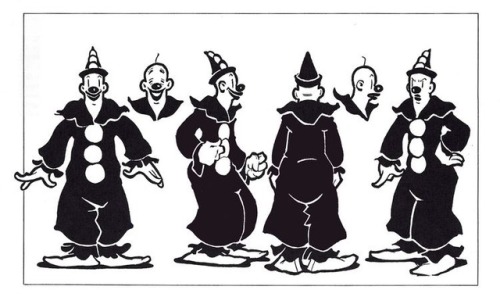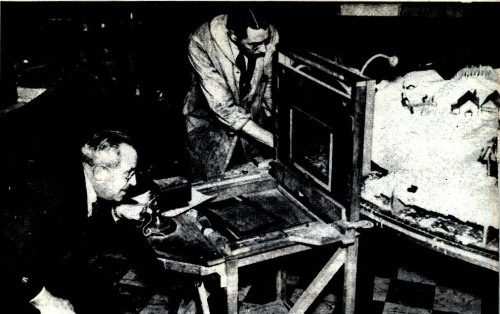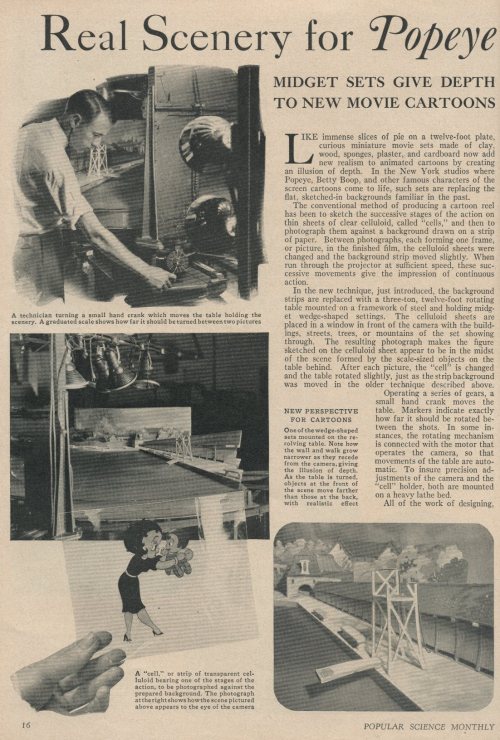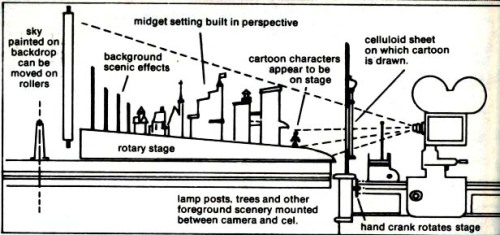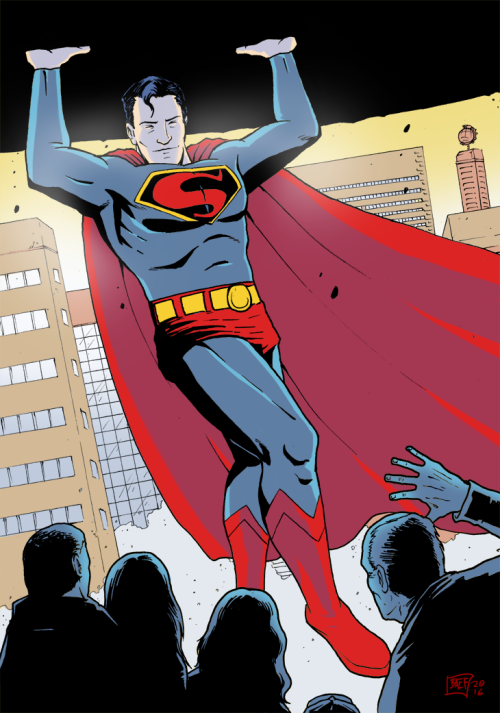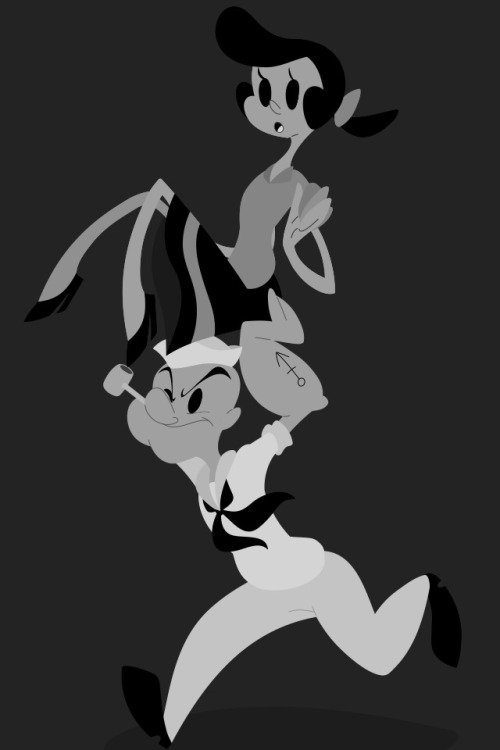#max fleischer
The famous “bouncing ball” device—during a song, a ball bounces on each word of the lyrics when it is sung, helping an audience sing along—was invented in the 1920s by Max Fleischer, of Fleischer Studios (Koko the Clown, Betty Boop, Popeye, Superman).
Seeing these ancient “Screen Songs” cartoons now, I get incredibly melancholic. It’s like wandering through a derelict building: the chattering voices of old ghosts still echoing through the empty halls, the toasts, laughter, the merriment. Sometimes, happy songs are the saddest songs.
Today’s theme: MUSIC.
Post link
The Innovations of Fleischer Studios
Besides changing the face of animation by bringing the world the invention of the Rotoscope, as well as the concept and animation technique of “Follow the Bouncing Ball”sing-alongs,Max Fleischer and his studio also pioneered a revolutionary technique in animation, known as the “Stereoptical Process”.
In this process, a circular, 3-D model of a background - a diorama - is built to the scale of the animation cells. It allowed for a spectacular sense of depth and dimension, long before Ub Iwerks came up with the Multiplane. Within the model setup, the animation cells could be placed at varying levels from the scenery, and even between objects, so that foreground elements could pass in front of them, adding to the dimensional effect. It was an effective method for panning and tracking shots, which would require a turn of the table with each photographed cell of animation.
The process was used in many of the studio’s cartoons, particularly in their longer, “two-reel” shorts, such as Popeye the Sailor Meets Sindbad the Sailor(1936),Popeye the Sailor Meets Ali Baba’s Forty Thieves (1937), and Betty Boop in Poor Cinderella (1934) - the only color (albeit in two-strip Cinecolor), theatrical cartoon ever made starring the iconic animated songstress, which features her as a redhead!
Post link

Noirvember is approaching its end for 2020, and yet I have a lot of seasonal spirit to share. Here is my closet cosplay of Marie Windsor in The Narrow Margin (1952). When I first brought up the film on this blog, it was its production and style that stuck in my mind–I didn’t even mention Windsor. So, even though I plan on bringing up that style again here, let’s let the cosplay make amends for my previous oversight. Windsor is too good to omit.

The film follows detective Walter Brown (Charles McGraw), who has been tasked with escorting Mrs. Neall (Windsor), the widow of a gangster set to testify before a grand jury, by train from Chicago to Los Angeles. As gangsters try to cut Mrs. Neall’s journey short, Brown realizes the situation he’s in is more complicated than it seems.

The Narrow Margin is swiftly-paced and tense with impeccable sound design. Every performance is on point and each role is well-cast. Obviously, Marie Windsor as the brash and defiant moving target stands out. I really can’t recommend The Narrow Margin strongly enough, even putting aside my penchant for train movies.
That said… setting a feature film on a train (or any other vehicle) presents a unique challenge in keeping the film’s visuals and space dynamic. Failing at it can result in overly static visuals, unintentional claustrophobia, or the space of the film becoming too artificial; all of which can lead to viewers disengaging from the story. But, The Narrow Margin sets a gold standard by focusing on interplay between planes of action.

READ ON below the jump!
The crew of the film is stacked with noir experience:
- Cinematographer George E. Diskant (They Live by Night(1949),The Racket(1951),On Dangerous Ground (1952), and so on),
- Art Director Albert D’Agostino (too many to cite TBH, but he tackled limited space again with Ida Lupino’s The Hitch-Hiker(1953))
- Art Director Jack Okey (Out of the Past(1947),The Racket,The Set-Up (1949) and quite a few more)
- And the oh-so-versatile director Richard Fleischer, who wasn’t all that well established before The Narrow Margin, though he was already in a noir groove around this time.
In my opinion, it’s worth considering that Fleischer’s father, animator Max Fleischer, might have had some influence on the kinetics of this film. Even if you don’t immediately recognize Max Fleischer’s name, you’ve likely seen one of his Betty Boop, Superman, or Popeye cartoons. Max Fleischer was hugely innovative in the technology of animation. He invented the process of rotoscoping and often experimented with photography.
Check out the awesome establishing shot here in Christmas Comes But Once a Year(1936)
Side-by-side comparison of Cab Calloway dancing and rotoscoped animation from multiple cartoons
I can’t help but think that the strong compositions and careful balancing of planes of action in The Narrow Margin were influenced by Fleischer’s awareness of his father’s work.


“Fleischer’s Animated News” was an internal publication printed during the years 1935-1937.
They were prepared by & for employees of Max Fleischer’s animation studios in New York.
This cover was drawn by Jake Ozark in 1936.
Fleischer Ink Sketches
Featuring Betty Boop & Bimbo
Betty Boop, Bimbo © Fleischer Studios
#bettyboop #bimbo #boopboopbedoop #maxfleischer #davefleischer #ink #sketch #sketchbook #cartoon #1930s #30scartoons #30sanimation #fleischerstudios #nicolasmartinez
A little walk cycle of Popeye the Sailor.
Done in Toon Boom Harmony.
Popeye the Sailor © King Features Syndicate
#popeye #popeyethesailorman #walkcycle #penciltest #toonboomharmony #toonboomanimation #2Danimation #handdrawnanimation #fleischerstudios #maxfleischer #davefleischer #segar #elziesegar #kingfeaturessyndicate

A comic strip trade ad for Koko the Clown shorts drawn by his uncle, Max Fleischer.
Film Daily, August, 1926.





Koko the Clown ballyhoo.
Film Daily, April-June, 1926.
Hey everyone, apologies in advance for the shameless plug, buuuuut…
‘Cartoons & Vodka’ by singer Jinkx Monsoon just hit the web today!
I had the pleasure to direct this love letter to cartoons, and the even greater pleasure of getting to work on it with a bunch of my good friends. If you could do me a solid and hit that reblog button I’d really appreciate it :D
For those of you not in the know, you may remember Jinkx Monsoon as the lovable season 5 champion of RuPaul’s Drag Race, or more recently as the villain Emerald on this week’s episode of Steven Universe!

